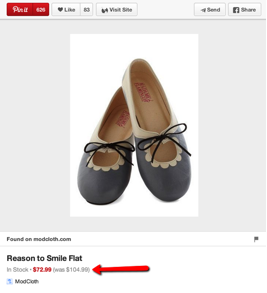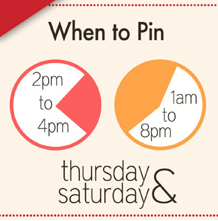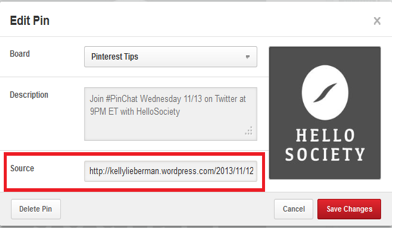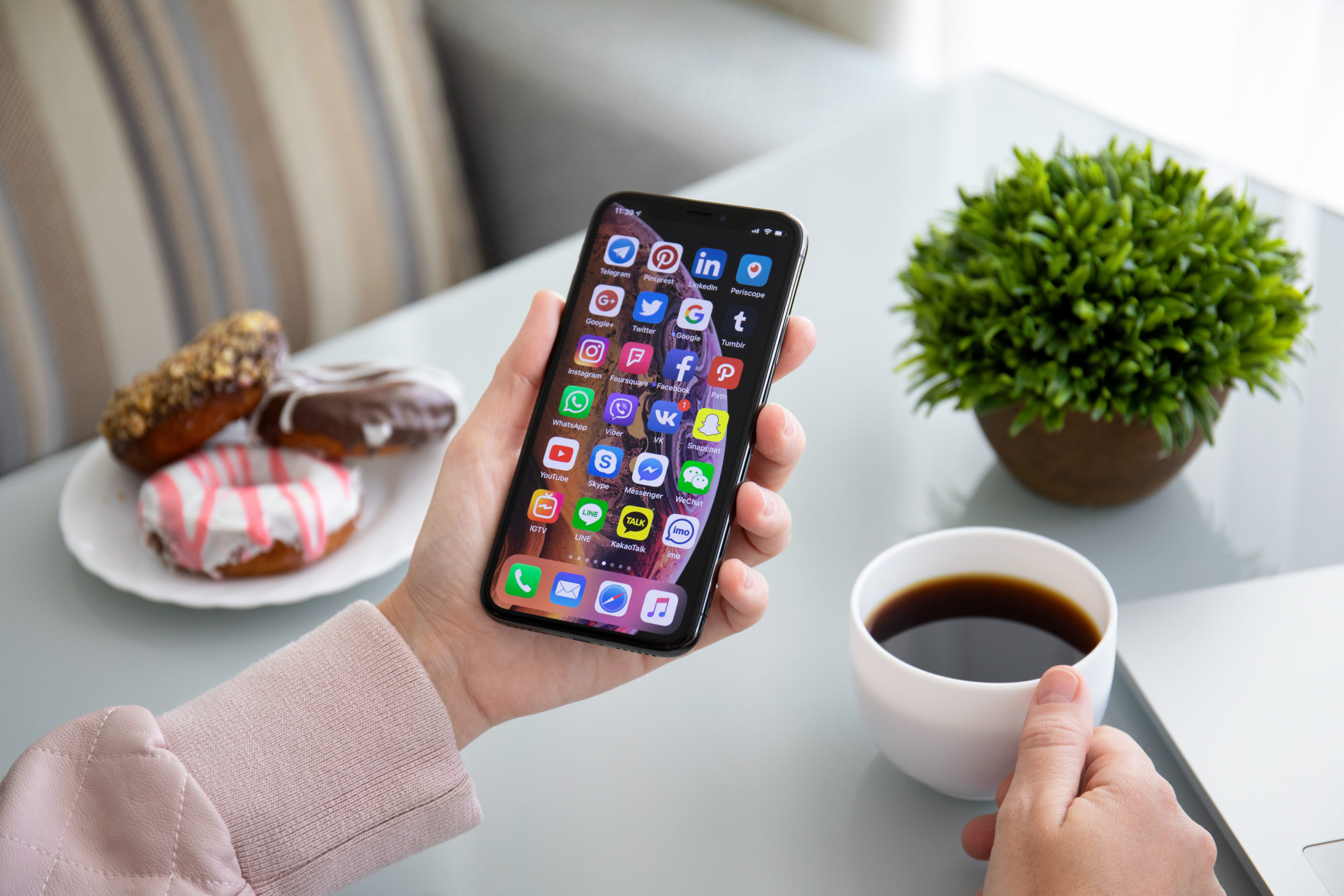A new wave of social networks has hit the web and it’s making visual-content-sharing the reigning champ of social media. At the helm of this fresh approach to digital interaction are Pinterest and Instagram, each of which showcases compelling photos, images, and videos that have been uploaded by users, including visual content specialists, such as artists and photographers, as well as companies and brands.
Marketers have really latched onto Pinterest and Instagram as a way to propel “social shopping” and encourage customers to “pin” and share images and videos of the products they use and like. Marketers have even started valuing visual content and social platforms more so than traditional social media, including Facebook and Twitter, a finding discovered in a report conducted by the Social Media Examiner, which included input from around 3,000 marketers.
Now, more and more marketers are looking to boost audience engagement by creating original images and video content. And their visual efforts have been paying off, leading to significant returns via more visitors, leads, and customers—all of which contribute to increased revenue. Not too shabby.
And the simple reason for the success of visual marketing and visual-based social media platforms? People love photos and videos.
But don’t just take my word for it…
Why Visual Content and Social Platforms Merit Your Time and Energy
Check out the following compelling statistics compiled by Amanda Sibley of HubSpot as a testament to why marketers should incorporate visual content into their marketing plans:
- “90% of information transmitted to the brain is visual, and visuals are processed 60,000X faster in the brain than text. (Sources: 3M Corporation and Zabisco)”
- “40% of people will respond better to visual information than plain text. (Source: Zabisco)”
- “Publishers who use infographics grow in traffic an average of 12% more than those who don’t. (Source: AnsonAlex)”
- “Visual content drives engagement. In fact, just one month after the introduction of Facebook timeline for brands, visual content—photos and videos—saw a 65% increase in engagement (Source: SimplyMeasured)”
- “85% of the US internet audience watches videos online. The 25-34 age group watches the most online videos, and adult males spend 40% more time watching videos on the internet than females. (Source: comScore and Nielson)”
- “Viewers spend 100% more time on pages with videos on them. (Source: MarketingSherpa)
- “84% of consumers told us that they have been convinced to make a purchase after watching a brand’s video. (Source: Platonik)”
Research also shows that marketers with more industry experience tend to value visual social networks, including Pinterest and Instagram, more highly than their less experienced counterparts.
Marketers who are relatively new to the game, with less than 12 months of social media experience, rate Facebook as their number one choice, with only 32% using Pinterest and even fewer—15%—using Instagram.
And while Facebook remains the most widely used platform regardless of experience, the percentage of marketers using Pinterest and Instagram more than doubles among more seasoned marketers, with 66% of marketers with 5+ years’ experience using Pinterest and 47% of more experienced markers using Instagram.

A shift towards visual social networks can also be seen among marketers who spend more time on social media each week. According to the Social Media Marketing Industry Report conducted by the Social Media Examiner, “Marketers who invest more than 40 hours per week are much more focused on Instagram (46% more), YouTube (38% more), and Pinterest (37% more) than those investing six or fewer hours a week with social media.”
Furthermore, research indicates that business-to-consumer (B2C) marketers tend to focus on visual content and social platforms more so than their business-to-business (B2B) colleagues, who prefer blogging, Google+, and LinkedIn.

Accordingly, since it’s a wise move to heed the advice and actions of those with more experience and who possess more savoir-faire, marketers, especially B2C marketers, should take a cue from their precursors and implement a marketing strategy that incorporates visual content along with Pinterest and Instagram.
Increase Your Web Traffic with Pinterest
Here are five essential strategies you can use to drive more traffic to your website from Pinterest.
Validate Your Account
There are tons of posers online so validating your account by verifying your website is crucial for brand protection. Plus, when you gain that tick mark next to your website, indicating that you are in fact the owner of that website, you instill confidence in visitors that the account is legitimate.

Check out this free Pinterest Marketing Video Tutorial to learn more about how to verify your website.
Furthermore, once you’ve verified your site, you gain access to Pinterest’s free analytics tool, which you can use to assess the amount of traffic you receive from Pinterest and what you can do to get even more.
Add Your URL and a Call-To-Action to Pin Descriptions
You want to make it as easy as possible for visitors to move from Pinterest to your website. Any additional steps may mean less traffic for you. Plus, you want to provide your visitors with the necessary incentive and encouragement for clicking through. Mitt Ray, Founder of Social Marketing Writing, shares some tips below.
 Mitt Ray: “Pinterest automatically adds a link to your image, but to visit this website, the user needs to click on the pin first, wait for it to expand, and then click on the expanded pin. This process can be simplified by just adding the link to the same page (where the image is located) to your pin description. When you do this, users won’t need to expand the pin to visit the website, they can just see the image, read the description and click on the link in the description.
Mitt Ray: “Pinterest automatically adds a link to your image, but to visit this website, the user needs to click on the pin first, wait for it to expand, and then click on the expanded pin. This process can be simplified by just adding the link to the same page (where the image is located) to your pin description. When you do this, users won’t need to expand the pin to visit the website, they can just see the image, read the description and click on the link in the description.
This way of simplifying things for your followers by cutting out the step of expanding pins will get you more traffic. If Pinterest doesn’t let you post shortened URLs use the full one as shortened URLs are considered as spam.”
Moreover, in addition to including your URL in pin descriptions, you can increase your click-through rates even more by providing calls-to-action—actually asking people to click on your URL. Who would’ve thought? So, in your pin description, just before your website’s URL, add a phrase like, “Please click this link” or “Visit this website now” and see what kind of effect it has on your traffic.
Instill Shopping-Centric Mindset
People use Pinterest to curate their wish lists and favorite brands and products in one convenient spot. Therefore, it stands to reason that Pinterest has a significant capacity to drive sales directly from its platform. According to a PriceGrabber survey, 21% of Pinterest users have purchased a product after viewing an image of it on the website.
Given this statistic, a significant number of Pinterest users operate in “buyer’s mode” while perusing the site—a crucial state of being when it comes to purchasing conversions and one that marketers can capitalize on by using Pinterest’s brand-friendly elements to steer users in the direction of taking real, buying action.
Cara Harshman of Optimizely offers several suggestions for marketers below.
 Cara Harshman: “Use ‘Rich Pins’ to add extra details about images you’re pinning. This feature will make your content more engaging by encouraging your audience to connect with your brand in a more interactive way. Product pins, for instance, include real-time information about pricing and details about where people can buy the items that they’re pinning.
Cara Harshman: “Use ‘Rich Pins’ to add extra details about images you’re pinning. This feature will make your content more engaging by encouraging your audience to connect with your brand in a more interactive way. Product pins, for instance, include real-time information about pricing and details about where people can buy the items that they’re pinning.
Once you’ve enabled Rich Pins for your products, try dropping your prices every once in a while, as Pinterest alerts its users when the items they’re curating drop in price. This feedback loop can help drive conversions by reminding your audiences about the products that they love—it’s a way for brands to stay continuously engaged with their buyers.”

Post Pins at Optimal Times
Timing is everything. You’ve likely heard this expression before, as it can be applied to a wide range of situations and ideas, from joke-telling to relationships, and it also relates to posting on social media.
Mitt Ray: “An important factor that can get you more website traffic is timing. If you share your pins at a time when more people are online—more people will see them and click on them. This will get you more traffic.
According to Bit Rebels the best time to share on Pinterest is between 2 PM to 4 PM in the afternoon and 8 PM to 1 AM I the night. Try and post your pins between these times.
You could also post your pins at less popular times and see how that works for you. Sometimes posting at the least popular times could turn out to be a lot more effective as fewer people will be pining and there will be less competition.”

You can also use the following scheduling tools to save time and make sure you’re posting at the best hours each day:
- Traffic Wonker – Currently it’s free to use but it will eventually switch to a paid/free subscription model costing paid members $4.95/month.
- SocialPilot – The Starter plan is free for a lifetime. The Pro plan costs $4.99/month. And Pro Plus costs $9.99/month.
- Board Booster – You get the first 100 pins for free, and beyond that, the prices and pin counts range from 500 pins for $5.00/month to 5,000 pins for $50.00/month.
- Mass Planner – There is a 5-day free trial. Then, prices start at $9.95/month.
- ViralWoot – You can schedule 100 pins/month for free. But if you want to post more than that, monthly plans start at $12.
- Tailwind – For bloggers and small businesses, the Plus plan costs $9.99/month, and for large brands and agencies, the Professional plan costs $799.99/month. Or, you can request a personal demo of the Enterprise plan.
- Buffer – Get a 30-day free trial, and afterward pay $50/month for the Small Business plan or $300/month for Enterprise.
Link the Photos You Upload Back to Your Site
With Pinterest, you can create images related to your industry or niche and then direct the images back to your website. Sony Electronics’ “I can haz gadgets?” is a good example of a Pinterest board that’s using this technique effectively.
Vincent Ng of MCNG Marketing: “Here’s a picture of a cute dog with a speaker made by Sony. When this pin is clicked on, it leads directly back to an e-store operated by Sony Electronics that sells the speaker that’s seen in the pin.

This way you don’t always have to use the pictures that are on your website. You can use those other photos, or create graphics that lure your customers in with curiosity.
To redirect the photo to a site that you want, all you need to do it edit the pin and change the source of it.
Here’s a pin created by Kelly Liebermann of #pinChat about Hello Society. Notice at the bottom that you can edit the web address of the pin.

You can technically change the web address of any pin that you’ve uploaded or repined, but I don’t advise that you change another pinner’s source unless you are trying to redirect it to the original source of the pin.”
Increase Your Web Traffic with Instagram
Here are three easy suggestions for how you can increase the amount of traffic your website gets from Instagram.
Add Your URL to Your Bio and Comments
The first place new or potential Instagram followers go is to your bio to get a brief overview of what you and your company are all about. This means that your bio is prime real estate in terms of traffic-driving and should absolutely include your website’s URL (the same should also be said of your Pinterest profile).
With room for only 150 characters, however, you don’t have a lot of space for creativity. Nevertheless, your URL is a priority and the remaining characters should provide followers with the nutshell version of what your company does and what makes it unique.
Similarly, while Instagram comments aren’t hyperlinked, they do become live once the same photo or video is shared on Facebook or Twitter. So be sure to include a shortened version of your website’s URL when you leave comments on Instagram to help promote engagement and drive even more traffic.
Make Use of Watermarks
All of your images should be treated as equal in terms of their potential to go viral. You never know so don’t take chances. Add a watermark stamping your company name and URL to all of the photos and images you post.
If you have never added a watermark before, check out the iWatermark app, which allows you to easily add your URL to images for just $1.99.
Include Pricing Info in Your Product Images
Previously, we talked about inspiring a shopping-centric mindset with your Pinterest visitors. Well, the same can be said of your Instagram followers. Kim Garst of Boom Social offers words of wisdom below.
 Kim Garst: “There is nothing wrong with qualifying your traffic! Don’t be scared to include price tags on all your product photos. There’s no need to hide the fact that you’re an e-commerce site; in fact, product shots with price tags generally receive higher click-throughs on Pinterest than those without. I’ll bet the same [is] true on Instagram. If a person is interested in your product, they don’t want to ‘hunt around’ for the price of it.
Kim Garst: “There is nothing wrong with qualifying your traffic! Don’t be scared to include price tags on all your product photos. There’s no need to hide the fact that you’re an e-commerce site; in fact, product shots with price tags generally receive higher click-throughs on Pinterest than those without. I’ll bet the same [is] true on Instagram. If a person is interested in your product, they don’t want to ‘hunt around’ for the price of it.
It’s important to remember the reasons you are using Instagram: to build brand visibility and to give a more authentic, personal feel to your business. But you also want to make sure that fellow Instagrammers who want to connect with you via your website can do so easily.”
Effectively Track Your Content on Pinterest & Instagram
As with any other social media campaign, you need to have a strategy in place for monitoring your progress on Pinterest and Instagram. And fortunately, you can easily find analytics for both Pinterest and Instagram to help you with this process.
Pinterest Analytics
As previously mentioned, Pinterest actually has its own analytics, which you can unlock once you verify your website. Then, to access your Pinterest account’s analytics, go into the Settings drop-down menu and select the Analytics option.
 Marcela De Vivo of Gryffin Media: “Here are some questions that can be answered by analyzing the data from Pinterest Analytics:
Marcela De Vivo of Gryffin Media: “Here are some questions that can be answered by analyzing the data from Pinterest Analytics:
- What content are your visitors loving so much they just have to pin it?
- If you pin your own images to your board, are they attracting click-throughs originating from Pinterest?
- How many different people are pinning images from your site, and what are they pinning that you don’t know they’re pinning?
- What pins are bringing the most traffic from Pinterest to your site?
Using this information, you can determine what other images you should be pinning on Pinterest, what images/products to feature and highlight on your site or social media campaigns, as well as how to adjust [the] placement of products on your site.”
Instagram Analytics
While Instagram doesn’t have any type of analytics platform within the app itself, you can find numerous third-party apps to help monitor your progress. One such app that comes recommended by Instagram marketing expert Jenn Herman is Iconosquare.
 Jenn Herman: “It’s a free platform for use and the only setup required is connecting your Instagram account. After you’ve [connected] your account, they do all the work for you. And your analytics are updated daily so you can easily keep track of your information. You can even set up email notifications to receive an alert every time your Instagram analytics are updated.
Jenn Herman: “It’s a free platform for use and the only setup required is connecting your Instagram account. After you’ve [connected] your account, they do all the work for you. And your analytics are updated daily so you can easily keep track of your information. You can even set up email notifications to receive an alert every time your Instagram analytics are updated.
When you first access your Statigram account, you’ll land on the Overview page. This page is exactly that, a quick overview of your account. You can see how many followers you have, how many people you are following, and the total number of likes and comments you’ve received.”
Some of the other top items you can track with Iconosquare include post-optimization and engagement as well as who your most highly engaged followers are.
Conclusion
Visual content is taking over the online social sphere and savvy marketers are taking note. According to the Social Media Examiner, 92% of marketers believe that social media is an “increasingly essential tool,” and the rising trend towards visual content and social platforms is undeniable.
Both Pinterest and Instagram have the ability to convert browsers into buyers, drive more traffic to your website, and promote engagement. Additionally, both sites can integrate with your company’s website, Facebook page, and Twitter account. With so many benefits, visual content just may speak louder than words when it comes to social shoppers and driving traffic.
Justin Christianson of Conversion Fanatics states, “We are seeing a growing trend in visual marketing. Images and different imagery are having an increasing impact on conversion metrics. As we have seen in several different cases, Pinterest and Instagram, and even visual elements through Facebook and Native ads are a viable option to increase engagement and in turn increase results and revenue.”
Have something to add? Leave a comment.
Be sure to like, share and subscribe.
If you want further insight into how to maximize your Instagram and Pinterest traffic through optimization, we are happy to do a complimentary conversion acceleration session for you. Just contact us to schedule.




